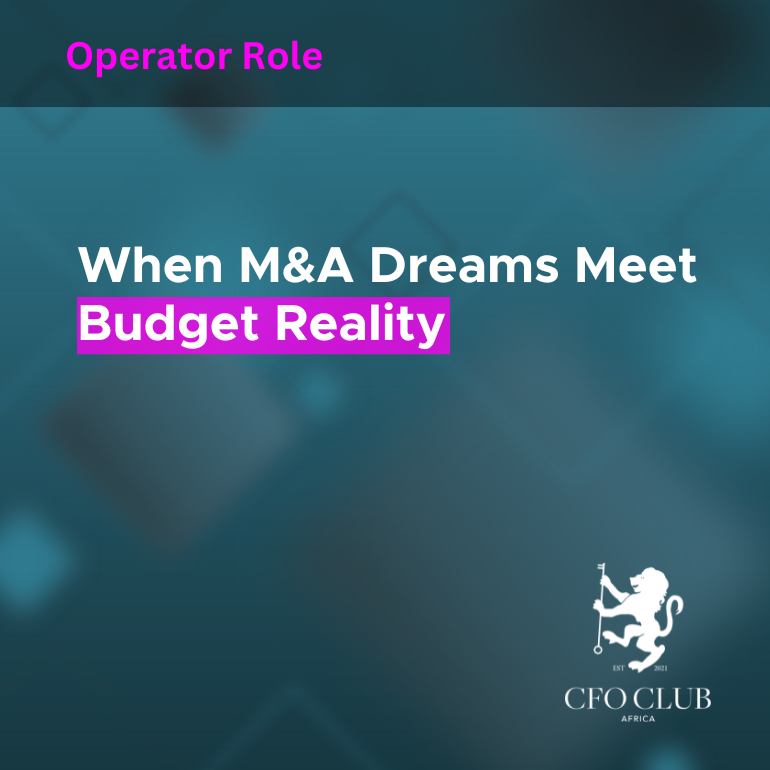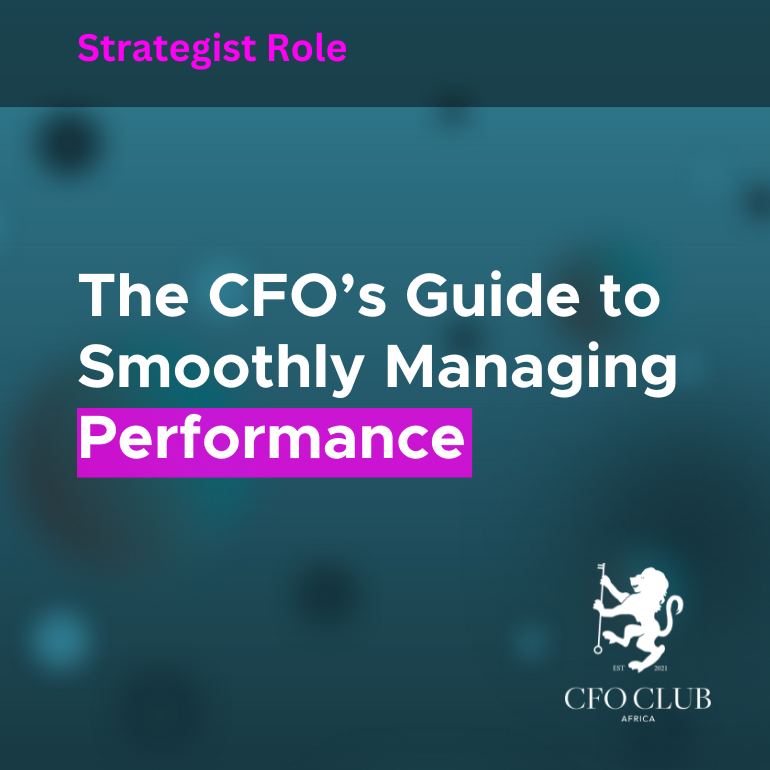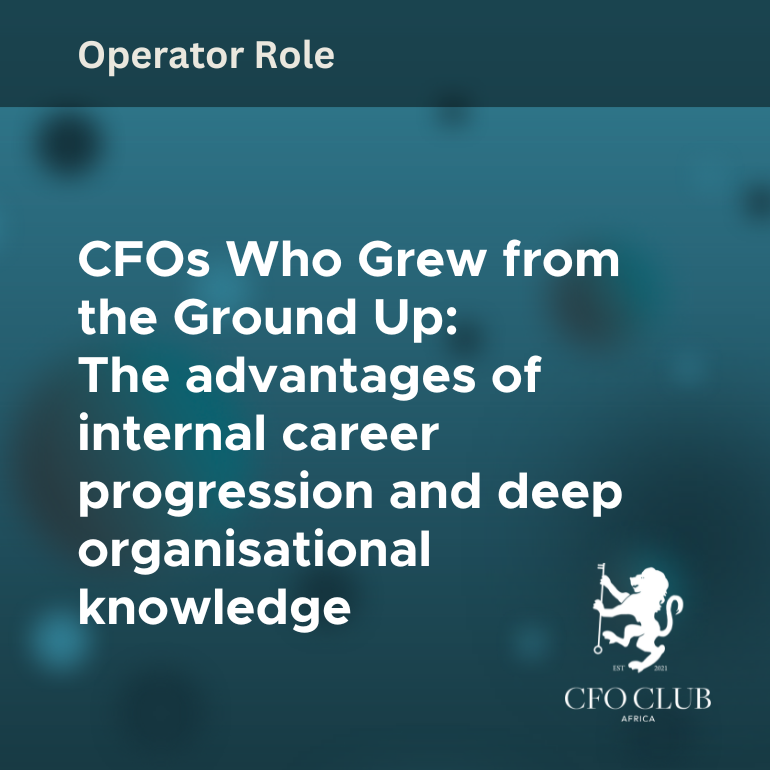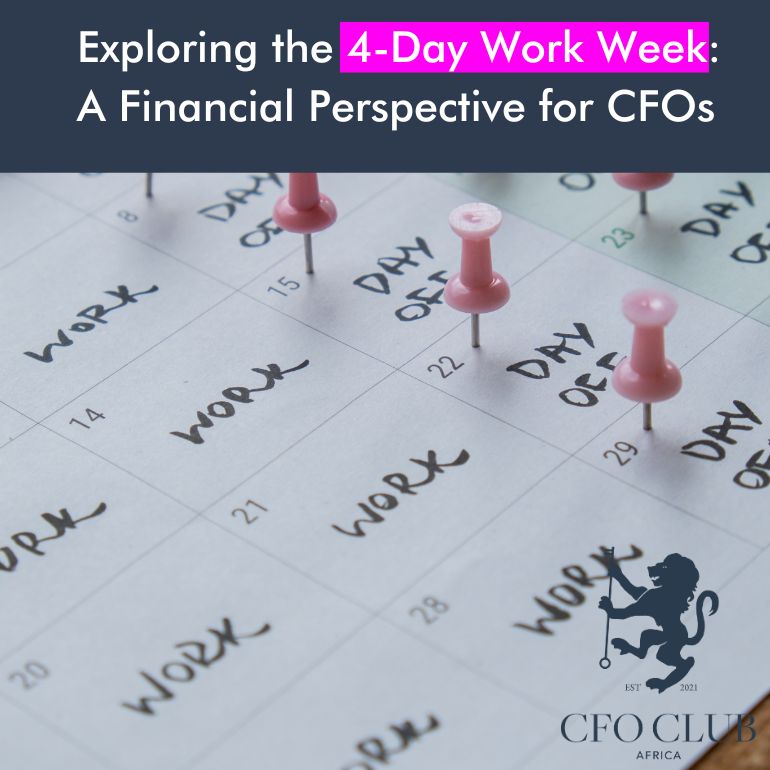When M&A Dreams Meet Budget Reality
When M&A Dreams Meet Budget Reality
Why the Real M&A Value Lies in Your Hands
When the board signs off on a merger or acquisition, the room is filled with optimism. Synergies, growth, market share – all the usual buzzwords fly. But as any seasoned CFO knows, the real work starts once the lawyers leave the room. M&A is not a trophy strategy – it’s a technical, financial, and operational grind. And you’re the one holding the spanner.
In South Africa’s volatile environment – where currency swings, regulation, and systemic risk add pressure to every line item – CFOs are not just backroom advisors in M&A. You’re architects, risk managers, value engineers, and post-deal integrators. If it goes wrong, it’s your neck on the line. But if it goes right? You elevate your company, your team, and your own leadership brand.
Here’s how you lead from the front.
Don’t Chase the Deal – Interrogate the Strategy
Too many M&A flops begin with a weak “why.” As CFO, your first job is to call out fuzzy logic and inflated expectations. Ask whether the deal truly advances the company’s strategy – or just flatters the CEO’s ambition.
You need to stress-test the commercial logic. That means looking beyond the headline EBITDA multiple and getting under the skin of revenue sources, client stickiness, market threats, and real synergies (not just theoretical cost cuts). This is where your financial model becomes the loudest voice in the room.
Use your insight to show whether the business is buying growth or buying trouble. If the deal doesn’t make long-term, measurable sense, say so. Loudly.
Own the Numbers – And the Risks
Due diligence is not about ticking off a checklist. It’s about revealing whether the business you’re buying is built on sand. The numbers lie if you don’t lift the lid.
CFOs should lead the due diligence process, not outsource it. You understand where risks hide – non-compliant tax structures, dodgy working capital, phantom revenue, overvalued IP, pending legal claims. In South Africa, you must also factor in complex issues like BEE ownership structures, unresolved SARS queries, or labour liabilities.
This isn’t just a desktop review. It’s a financial x-ray. And it’s your responsibility to ensure it’s thorough enough to support a go/no-go decision with confidence.
Price with Discipline – Not Emotion
Valuation is where many deals derail. If you’re overpaying, no amount of integration wizardry will save you. Your job is to apply cold, hard realism.
Don’t be bullied into accepting hockey-stick forecasts or synergy projections based on “gut feel.” Run your own numbers. Use multiple methods – DCF, earnings multiples, asset-based approaches – and triangulate the result. Stress test every input.
You also need to think through the mechanics of the deal. How much debt can you really carry? What’s the FX exposure? Do you need an earn-out clause to de-risk assumptions? Will the deal structure trigger tax or accounting landmines?
The board may get excited by the vision. You stay grounded in the math.
Negotiate Like It’s Your Balance Sheet – Because It Is
Don’t assume the lawyers will “sort the paperwork.” You need to be at the negotiation table – because financial terms are where deals either protect or destroy value.
As CFO, you negotiate working capital adjustments, escrow terms, earn-out metrics, indemnities, and other critical deal protections. These are not technicalities. They are the safety nets that ensure your company doesn’t inherit nasty surprises.
And remember, your role here is dual: you’re negotiating for value, and for post-deal workability. If the commercial terms create reporting nightmares or operational friction post-acquisition, it’s you who will have to fix it.
Deliver the Synergies – Or Don’t Bother
Deals are easy to sign and hard to integrate. The post-merger landscape is where your leadership really matters.
You must lead the integration of financial systems, controls, and reporting frameworks. If you’re consolidating two finance teams, set the tone early – structure, roles, reporting lines. If there’s a new ERP rollout or policy harmonisation needed, you drive it.
Be especially alert to cultural and behavioural issues. One misaligned budget process or month-end cycle can derail your timelines and distract leadership from strategic execution.
And yes, if synergies were promised to the board or market, you’d better have a credible roadmap – and someone tracking every milestone.
Communicate With Precision and Credibility
As CFO, you’re the voice of credibility when explaining the deal to investors, the board, employees, and regulators. They want clarity, not spin.
Internally, your finance team will look to you for certainty. Externally, the markets want to hear how you’ll make the numbers work. Your job is to tell the story honestly, explain the risk posture, and position the deal as a logical, value-accretive move.
Don’t sugar-coat challenges. Highlight your mitigation plans, show you’ve modelled downside scenarios, and reinforce confidence in the post-deal integration path. Your tone sets the narrative.
Protect the Downside – And Your Reputation
Even if everything checks out, something always goes wrong. A key customer walks. A critical system fails. A promised synergy vanishes. This is where your risk planning matters.
Build buffers into your models. Monitor post-deal KPIs religiously. Set clear thresholds for when to escalate problems. Keep a pulse on staff morale, client churn, and cost creep.
Above all, know that your reputation rides on how the deal performs after signature. Boards remember CFOs who delivered value – and those who didn’t.
M&A Is a Career-Defining Space for CFOs
In today’s market, every deal is high stakes. The margin for error is thin. But this is also where you prove your value – not just as a gatekeeper of financial hygiene, but as a strategic heavyweight.
If you want to be seen as a future CEO, there’s no better proving ground than M&A. It tests everything: your judgement, your leadership, your technical chops, and your ability to align people and numbers behind a vision.
So don’t wait for the deal to land on your desk. Be the one who makes it make sense – and who ensures it delivers.





